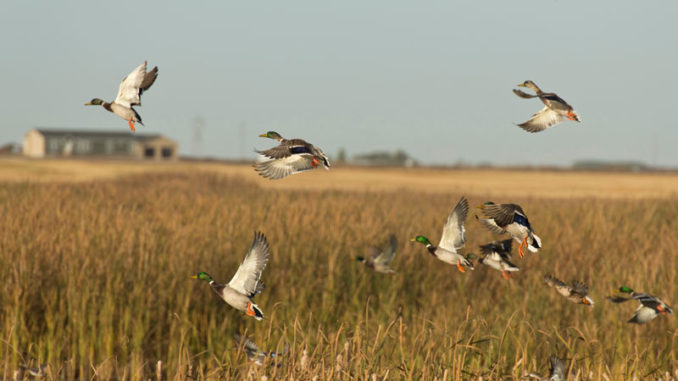
Duck season should be “average” to a “little north of good,” according to two Canadian representatives from Ducks Unlimited and Delta Waterfowl.
The men gave their report at the Louisiana Wildlife Commissioners monthly meeting on July 6.
Dave Kostersky, with Ducks Unlimited Canada, and John Davis, with Delta Waterfowl Canada, both stressed that Saskatchewan and Manitoba prairie lands were vital for Louisiana’s duck season.
Saskatchewan is renowned for having some of the most abundant and productive waterfowl habitat in North America. Situated within the pond-rich Prairie Pothole Region, ducks hatched and raised in its province disperse throughout the entire continent and beyond.
Although smaller in size than Saskatchewan, Manitoba is considered just as important. Its vast landscape contains a mixture of the Prairie Pothole Region known for producing high densities of ducks, a vast boreal forest region with thousands of lakes, and a subarctic region important for large numbers of staging and nesting Canada and snow geese.
Grasslands, too
Additionally, prairie wetlands provide crucial food resources for young and adult waterfowl alike, and provide sanctuary for ducks during molt. When it comes to breeding waterfowl, surrounding grasslands are equally as important as the prairie potholes themselves. Hunters do not want the ducks to overfly the Canadian prairies, the duo warned.
“You want them to fly over, look down and see water and stop in the prairie,” Davis said.
“One of the things people think about is the wetlands when they think about ducks,” Kostersky explained. “But half of our species of ducks nest in grasslands. Without a healthy cattle industry across this continent we don’t have grass. We need a demand for grass to make grasslands work.”
The men said both their respective organizations work with Canadian landowners to conserve the prairie lands.
Meanwhile, Canadian prairie region precipitation has been “average to slightly below average,” Kostersky said. “Eastern Saskatchewan is in pretty good shape, the central part recently got a lot of rainfall and Southern Alberta is dry. It’s certainly not drought conditions, but it is also not a wet condition across the continent.”
According to Davis, who mainly spoke about Manitoba, some parts prairie or grasslands are dry while some are wet, but he said that was normal.
“This is how the prairie works,” Davis said. “Rarely is it all wet or all dry. On a typical year it is wet somewhere and dry somewhere and collectively there is a group of ducks that come south.”
It can change quickly
Davis called overall Manitoba prairie conditions “mediocre,” while saying the 90-day rain forecast was “not bad.”
“What we know about the number of ducks produced is that it can change overnight,” the Delta Waterfowl representative said. “We’re probably just little north of good on duck production this early in the process.”
The Louisiana Department of Wildlife and Fisheries (LDWF) are large contributors to both organizations and their conservation efforts. Since 1975, LDWF has contributed $1.7 million to Ducks Unlimited Canada, according to Kostersky.
This past year LDWF provided $179,819 toward the Hrushowy Purchase project located in the Missouri Coteau of Saskatchewan, Kostersky informed the group. This allowed for the purchase of 258 of 798 acres on the project.
“Our goals and objectives back in 1938 was the idea of having waterfowl forever,” the DU Canadian representative said. “Our work with you and volunteers is all about sustainable waterfowl and the concept of sustainability of all natural resources across North America.”
